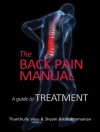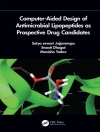Despite overwhelming evidence of tobacco’s harmful effects and pressure from anti-smoking advocates, current surveys show that about one-quarter of all adults in the United States are smokers. This audience is the target for a wave of tobacco products and pharmaceuticals that claim to preserve tobacco pleasure while reducing its toxic effects.Clearing the Smoke addresses the problems in evaluating whether such products actually do reduce the health risks of tobacco use. Within the context of regulating such products, the committee explores key questions: Does the use of such products decrease exposure to harmful substances in tobacco? Is decreased exposure associated with decreased harm to health? Are there surrogate indicators of harm that could be measured quickly enough for regulation of these products? What are the public health implications?This book looks at the types of products that could reduce harm and reviews the available evidence for their impact on various forms of cancer and other major ailments. It also recommends approaches to governing these products and tracking their public health effects.With an attitude of healthy skepticism, Clearing the Smoke will be important to health policy makers, public health officials, medical practitioners, manufacturers and marketers of "reduced-harm" tobacco products, and anyone trying to sort through product claims.
Board on Health Promotion and Disease Prevention & Committee to Assess the Science Base for Tobacco Harm Reduction
Clearing the Smoke [PDF ebook]
Assessing the Science Base for Tobacco Harm Reduction
Clearing the Smoke [PDF ebook]
Assessing the Science Base for Tobacco Harm Reduction
Купите эту электронную книгу и получите еще одну БЕСПЛАТНО!
язык английский ● Формат PDF ● страницы 656 ● ISBN 9780309511841 ● редактор Kathleen Stratton & Padma Shetty ● издатель National Academies Press ● опубликованный 2001 ● Загружаемые 3 раз ● валюта EUR ● Код товара 7146082 ● Защита от копирования Adobe DRM
Требуется устройство для чтения электронных книг с поддержкой DRM












